This is not the story I wanted to write about Tsugaru. It’s also not the story I ever considered I’d have to write. However, after my experience, while I wish I could keep quiet and maintain a positive image, I know I simply can’t. When I see a wrong I know I need to speak out. So here we are.
If you still decide to go to Tsugaru, at least I can say I warned you.
Part 1 covers some background and my “Why.” Part 2 covers what happened when we were in Japan to swim. Part 3 covers my ask. And scroll to the bottom if you’re not familiar with the Oceans Seven challenge and need some background.
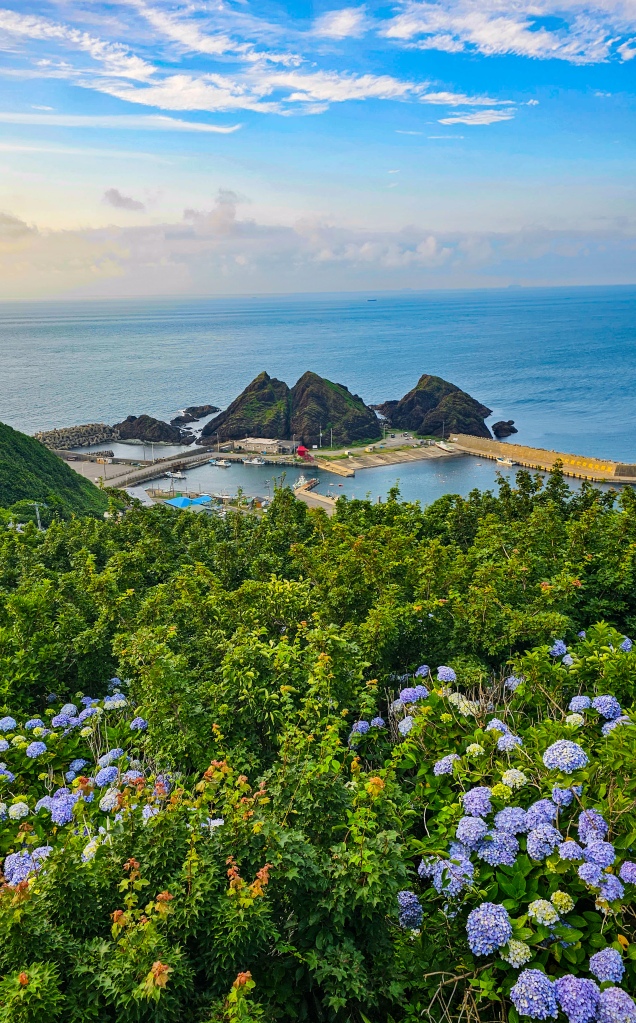
Part 1: Background
My journey to the Tsugaru Strait started a long time ago, well before I had heard of the Oceans Seven or even considered trying to finish this challenge.
In 2012, my good friends Darren Miller and Craig Lenning went to Japan to swim the Strait of Tsugaru, which is roughly a 20km stretch of water between the main island of Japan, Honshu, and its northern island, Hokkaido. It was the first I’d heard of this swim and both Craig and Darren came home with some incredible stories. Craig spoke highly of the people of Japan and the stunning beauty of the water there.

I immediately added Tsugaru to the list of swims I wanted to complete someday. Ryan especially wanted to take a trip to Japan, so we shortlisted that swim as a bucket list, dream swim, for someday when we could save up for it. I didn’t even know about the Oceans Seven in 2012 and when I did learn about it, I had no desire to pursue it. It’s expensive and I had other things to do. But, Tsugaru has always been on my list.
Back in 2012, Tsugaru was still a pretty unknown swim. When Craig was there, he started his swim and they pulled him after 15 hours, saying he’d never make it. Even back then, pilots in Tsugaru were leery about night swimming. But the next day, Craig’s swim organizer, Mr. Ishii, came back to him with a proposed different route- swimming from Hokkaido and landing on Honshu, wherever the current lead. Craig agreed to try, so after less than a full day’s rest, he took off from Hokkaido and landed on Honshu, following a new route, which he was able to complete in 10 hours and 44 minutes.
It was an exciting story, but funds are tight, so, as much as I knew I wanted to do this swim, I also felt it needed a few more years to grow up. It was expensive then, and the travel to Japan would be a huge financial undertaking, so I let it sit.
I followed, with interest, other swimmers and their crossings over the years and knew the swim was doable, but with wildly different results. Faster swimmers were taking longer times. Slower swimmers were skipping across. People like Craig and Liz Fry tried new routes. And so, I waited.
Then, in 2019, shortly after finishing the English Channel Four way, I finally emailed Ocean Navi to put my name on their waitlist, which was 2-3 years long. It was my understanding that Ishii was retired and all the research I could find told me that Ocean Navi, which was recommended by WOWSA, was the best option for a successful swim. Others had used them and I was seeing a lot of successes and a more standardized route from Cape Kodomari across. And then COVID hit and they didn’t start taking swimmers again until 2022. My buddy John had his slot come up this year and he offered to let me tandem with him. So, we paid our fees in full in January and officially committed for a slot in August 2023.
The Tsugaru Strait is a challenging swim not because of distance (30km isn’t far for marathon swimmers) or cold (temps over 20C/70F) or jellyfish, but because of the currents and wind. The Sea of Japan sits slightly higher than the Pacific Ocean, so the currents area always ripping through the Strait, from west to east. And it can get pretty blowy.
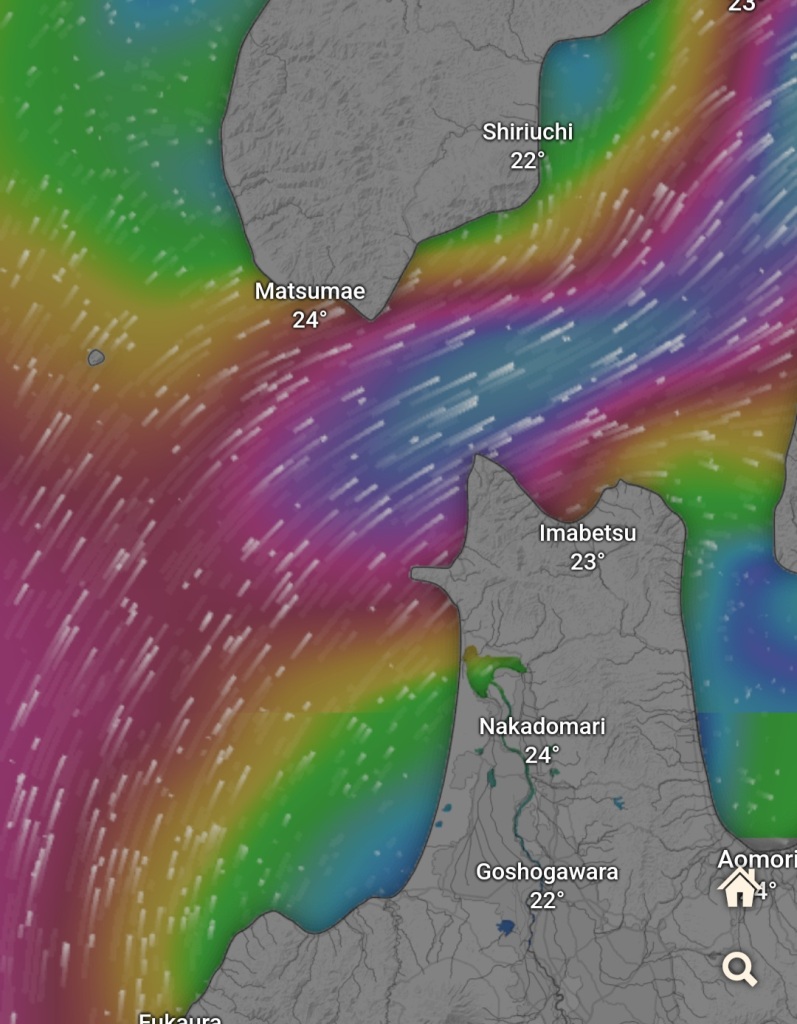
The currents are so strong that the fastest of swimmers would not be able to swim head on into the current and make any progress. To be successful in Tsugaru, you need to be able to time your swim and route so you’re working with the tide.
Ocean Navi also only takes swimmers in July/early August. This is because it’s the time of year that the currents between the Sea of Japan and the Pacific Ocean tend to be the mildest.
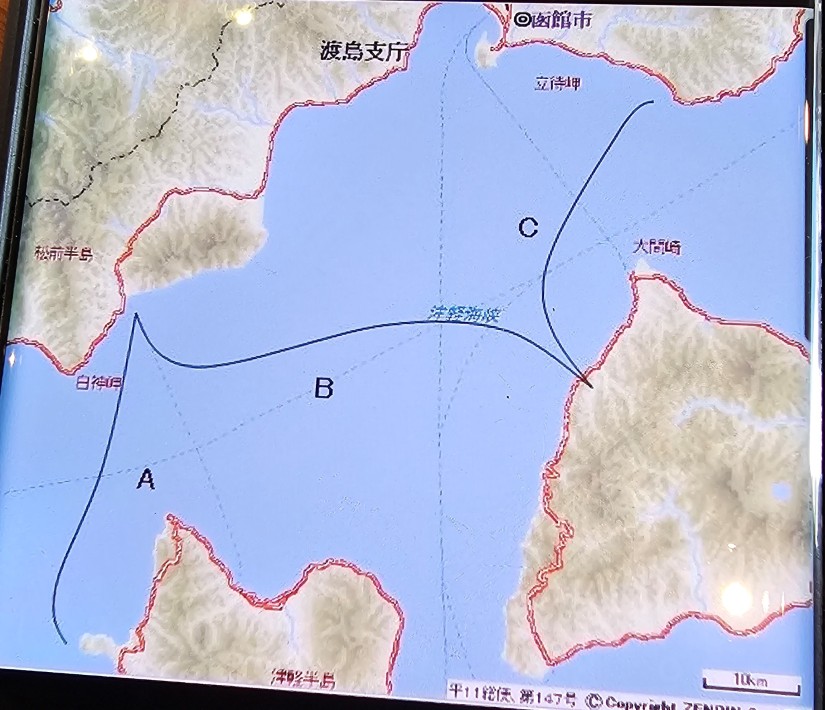
The standard route you see here is Route A, from Cape Kodomari to Hokkaido. It lengthens the route by about a 10k, turning the original route 20km swim from Cape Tappi into a 30km route. The idea here is that you can take off from the Kodomari and swim north and west far enough before being swept to the east through the Strait. Historically, swimmers have started in Cape Kodomari and finished anywhere on the east or west side of Cape Shirakami.
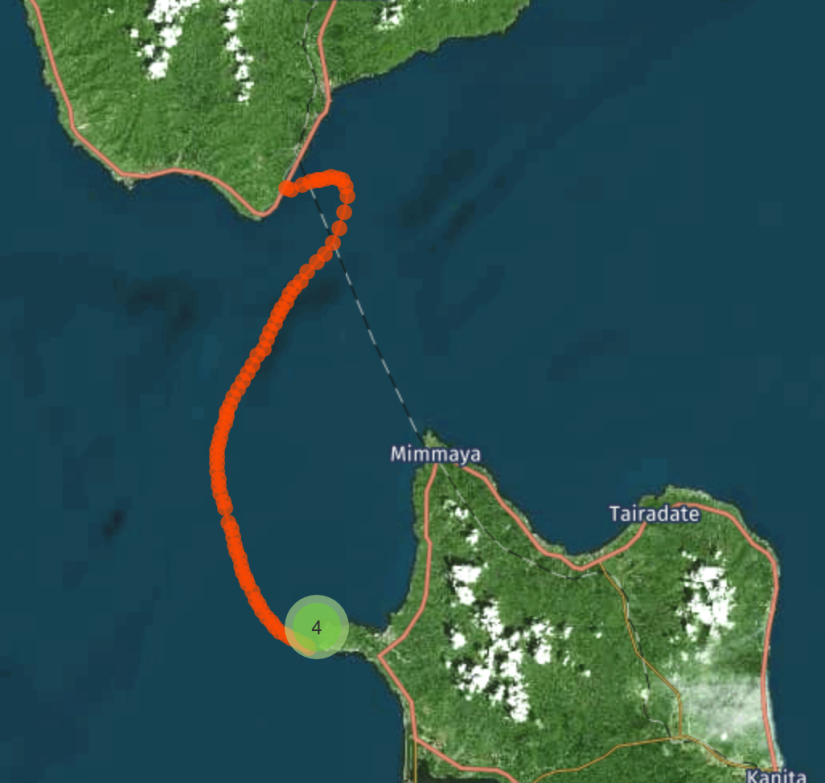
Route B above is the route Craig followed on his swim- much longer, but he left from the north and used the currents to shove him south. Liz Fry did the same with route C, going from Hokkaido to Honshu. As far as I know, they are the only two, under the guidance of Ishii to do a swim other than from Kodomari or Tappi with success.
Also, many have been successful leaving from Tappi and going due north. If the currents are calm, you can skip right across.
Here is a list of all Tsugaru finishers, if you’re interested: https://longswims.com/events/tsugaru-strait/
When I signed up in 2019, I knew of all the recent successes in 2017 and 2018 and assumed things were settled in Japan and thought it would finally be a good time to make a trip to Japan.
Before I signed up, I knew the challenges with currents and wind and that there were also weird things about their contract that were more irregular than most other major channel swims:
-It’s very expensive: 900,000 yen or about $6000 USD. For comparison, I paid $2500/lap in the English Channel in 2019. And thought the $4000 I paid for Molokai in 2021 was absolute insanity.
-Their contract requires you to pay the full amount upfront. If the swim is blown out due to weather or cancelled due to boat issues, you only get back 25%. If you want to try again in another year, you pay the full amount. (For most swims, you pay a deposit and don’t pay in full until the swim is confirmed to start. If your weather window gets blown out, pilots work hard to get you rescheduled a soon as possible at no extra fee. If you decide not to swim, you get all your money back, besides the deposit.)
I also knew that during COVID, the main boat captain retired, but I heard they had found a suitable replacement. I honestly didn’t follow the 2022 season closely, but I hadn’t heard any warning signs, so John and I eagerly accepted his slot and kept mine for whenever it might come up (in either 2024 or 2025). Our thinking was if we came in 2023 and got blown out, we could try again another year under my slot. My point is: I KNEW there was a strong chance of getting blown out. That was a known risk, just like the risk in the contract. We, like many others, were willing to accept the above risks.
And then, two weeks before their swim season started, I receive the below email from Yusuke, who had been organizing our payments and coordinating our swims.
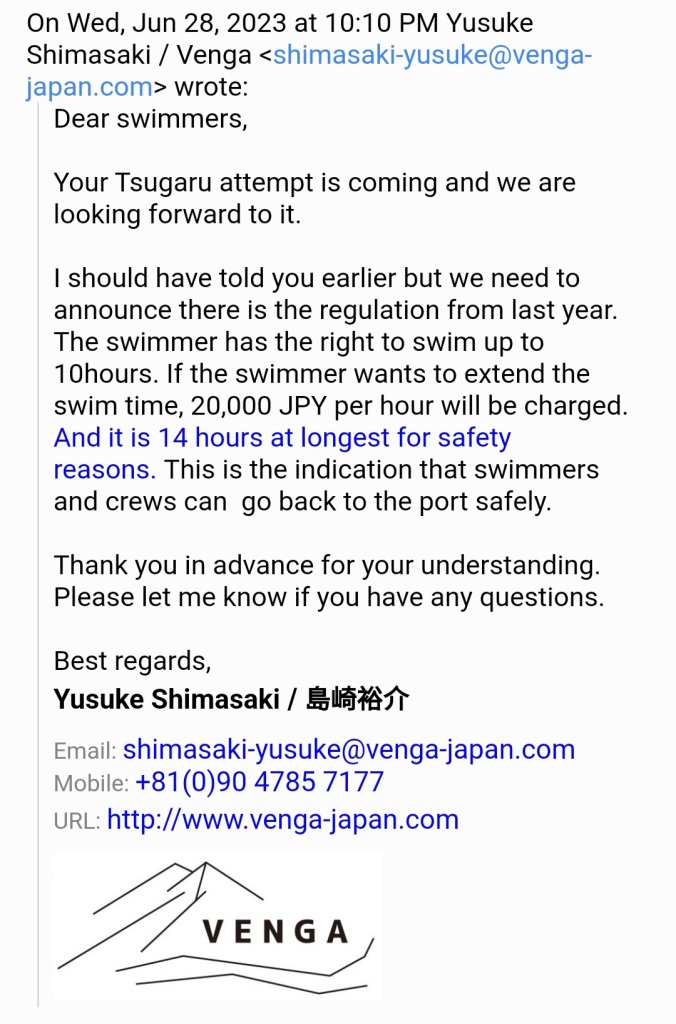
Needless to say, these two new rules took me by surprise.
1. Swims can only go for 14 hours because the Japanese Coast Guard no longer allowed any night swimming.
2. We have to pay an additional 20,000 yen for every hour over 10 hours.
Now, I did what any normal person would do: I looked up all the swims longer than 14 hours. So many fast swimmers took more than 14 hours. Penny Palfrey. Darren Miller. Adam Walker. Liz Fry. And most swimmers take over 10 hours.
And then I noticed something curious: Only three successful swims were listed for last year.
Warning bells started to ring. Loudly.
I emailed Yusuke back, copying Steve Munatones, and let him know how prohibitive these two new rules would be to many swimmers, on a swim already more expensive than most. But, it was two weeks until we left. Flights were booked and lodging secured; it would have cost me more to cancel everything two weeks before we left than to just go and hope for the best.
I also started following Ocean Navi on Facebook (Channel Swim Japan) and noticed something peculiar: No one was making it this year. In particular, I followed Paul Georgescu of Romania. He spent 10 hours in the Channel and looked like he had a solid route to finish. Seeing him get pulled was shocking and terrifying. He has a record of finishing the English Channel in 13.5 hours, Catalina in 9:47, Kaiwi/Molokai in just over 13 hours, and the North Channel in just over 11 hours. In short, he’s a good, highly competent, fast swimmer. If he couldn’t beat the tides, what did that mean for me and John?
Part 2: The Swim Story
On Saturday, July 15, John and I were summoned to a meeting with our boat captains and observer. Also joining us was a swimmer from Russia, Liudmila Popova, and her team. She was on our window as well.
The meeting lasted two hours. Some of that was because of the language barriers- we had to translated Russian and Japanese and English, but two hours is an insane amount of time for a swim meeting. We covered some basic housekeeping, like being reminded about the additional 20,000 yen for every hour over 10, and were made to sign paperwork that said the pilots had full discretion to pull us. But by the end of the meeting, the info we received was shocking. In addition to the 14 hour/no night swimming rules, we were told:
-If the pilots didn’t think we would make it in time, they would pull us.
-If we crossed the straight-line marker in the middle of the Strait, we would be pulled because,
-Finishing on the east side of Cape Shirakami is forbidden.

Now, I’ve seen enough tracks to know that several people finished on the east side. I pulled up Antonio’s route on my phone. I showed it to observer and she brushed me off: Antonio had finished his swim before 2020, and it’s now impossible to finish to the east.
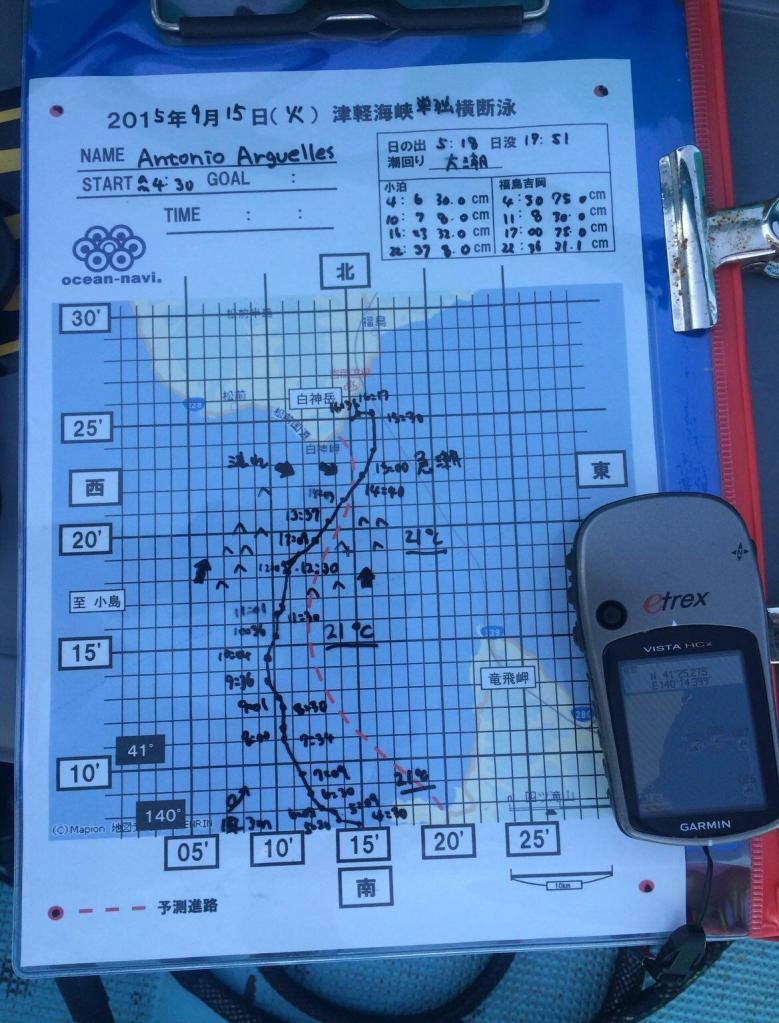
Of course, I asked “WHY?”
“Global Warming has changed the currents and now it’s impossible.”
The pilots then pulled up Caitlin O’Reilly’s route from 2022, as an example of a “classic success story.” The gist of it being: If you don’t follow Caitlin’s route, you won’t make it.
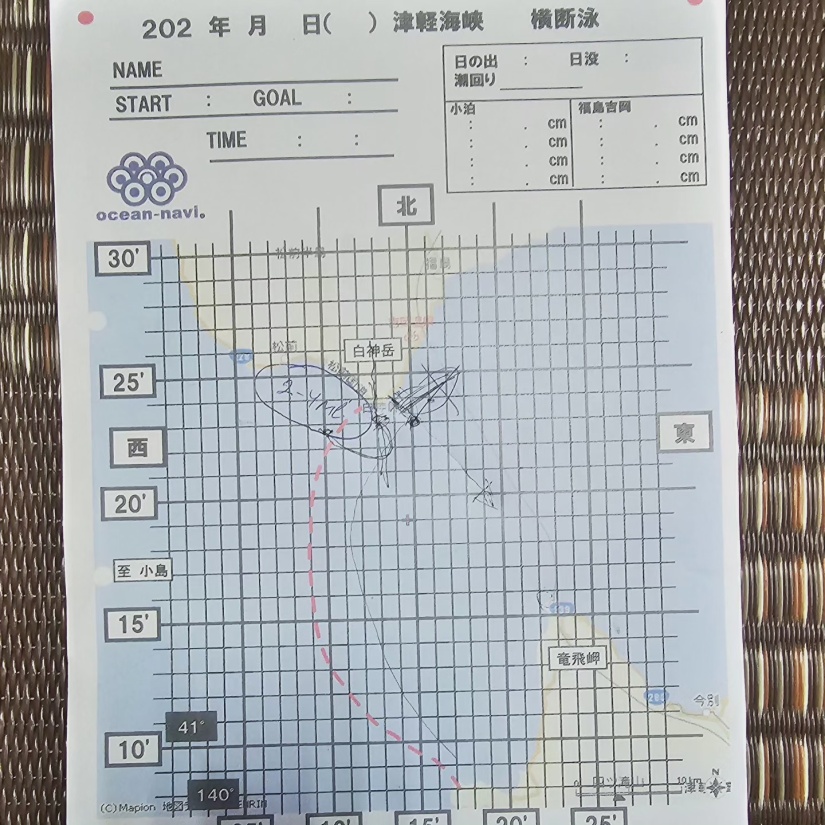
I then asked “Why haven’t any swimmers been successful this year?”
Obviously, that went over well.
We got a long explanation that also blamed global warming: It has caused the current across the Strait to grow wider this year, making it nearly impossible to cross.
Now, I’m not a global warming detractor and I know that warming temperatures are causing ocean temps to rise, resulting in all sorts of changes. I’m just not sure how in one year they have changed so much that finishing to the east of Cape Shirakami and crossing the Strait is now impossible.
I asked our observer what it would take to be successful. Her reply (after she clarified that she was allowed to have an opinion): Swim the first 10k as hard as you can so that you’re in the Strait within a 10k.
A 10k within about 3 hours is a hard ask when strong currents are in your face.
As we were sitting there, the captains drew a grid on a piece of paper to mark down the days in our swim window: The 16th and 17th were impossible. The 18th looked good. The 19th was impossible. The 20th was looking good, but it was so far out that the weather might change so they didn’t want to count on it. In making their determination, they looked at wind, waves, and rain forecasts on the Windy app.
I asked if they were looking at currents and planning for those.
I was told that predicting these currents was “impossible.” So impossible, they didn’t even consider them for the swim.
Makes sense from their point of view: To maximize the 14 hours allotted daylight time, all swimmers start at 4 am and have to be done by 6 pm. To them, the currents don’t matter- it doesn’t matter if currents are better at midnight because we can’t swim then. It doesn’t matter if the currents are better at noon because no one would finish before 6 pm.
To a swimmer though, currents matter the most. Especially when you have a deadline.
While I don’t speak Russian or Japanese, I understood the Mila and her team were asking the same hard questions as we were. We all had the same info and all three swimmers were determined to make the best of our chances.
Eventually, it was decided that John and I would swim the 18th and Mila would swim the better day of the 19th or 20th. (For brevity’s sake, I’ll spare you the details on how THAT was determined, but it was shady AF and entirely unprofessional.)
We all left the meeting with a nasty taste in our mouths: All the rules about how we would be pulled and no offerings of how they would help us to be successful. Already, the feeling that the pilots cared about their yen more than a successful swim was creeping in.
Regardless, we prepared for our swim, knowing full well John and I were each about to be out $5000 USD (we paid a higher overall fee for a tandem). Nonetheless, we arrived at the boat dock at 3 am on the morning of the 18th. Immediately upon arrival, we were told the wind were too strong and the wanted to wait until 6 am before deciding. The forecast hadn’t really changed a ton in the last 24 hours, so we were slightly confused about the delay and concerned about what starting at 7 am would mean for our swim, since currents get stronger as the day progresses. In the end it didn’t matter: By 5 am they decided. “It is unsafe to fish, so it is unsafe to swim.”
In all my years, I’ve never questioned a pilot’s decision to cancel due to weather. And even in this moment, I could see white caps on the ocean and it was spitting rain. So, with hugs and handshakes we went back to bed.
Mila’s swim the next day started- her wind forecast was good, but in looking at the currents, we could see she had her work cut out for her. About 2 hours into her swim, we could tell she wasn’t going to make it. She was eventually pulled after swimming just 16.7 km in just over 8 hours. Again, she’s a strong swimmer. She, like the swimmers before her, was put in the water in the face of impossible currents.
Now, the only chance John and I had for a swim was the 20th. In looking at the forecast while Mila was in the water, we could see it was windy for the next day. However, for the first time all week, I noticed something: Currents in the morning were aiming due north, rather than east. If we could swim a little west and let the currents push us north, we would have four hours to get into the strait before being pushed west, hopefully getting us far enough north in time to catch a ride to the west side of Cape Shirakami. It was a long shot and the wind conditions would make for a rough boat ride, but even more promising were the surface current predictions- heading due north all day long.
It was our only chance. And it was Ocean Navi’s first chance for a successful swim, given the change in currents.
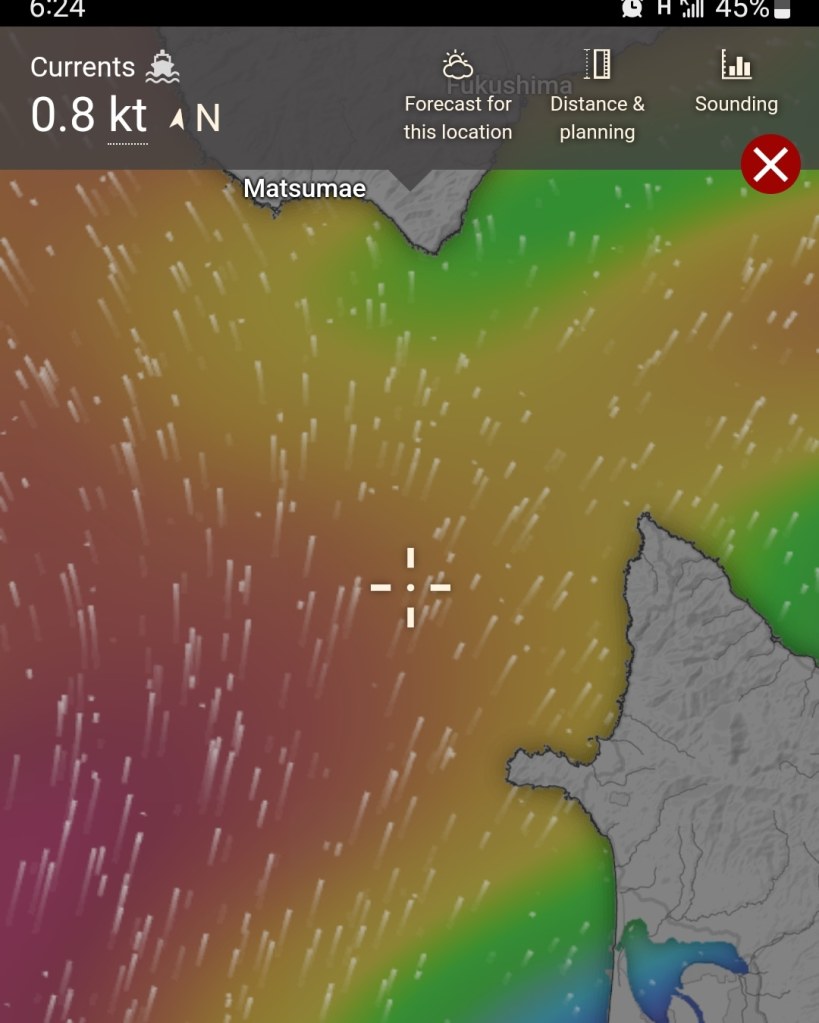
I knew it would be a long shot to convince the boat pilots to take us out, since the wind was forecasted for stronger than it was the day they initially cancelled us on. They ultimately refused to hear us out regarding currents and wind, without negotiation.
To be clear, on the Beaufort wind scale, an English Channel boat captain will take a solo swimmer out in a 3-4 and a relay out up to a 5. Anything over a 6 in the forecast is a no go.
Our forecast for Tsugaru was a 3-4, but we were told again, “It’s unsafe for fishing, so it’s unsafe for swimming. The swim is cancelled.”
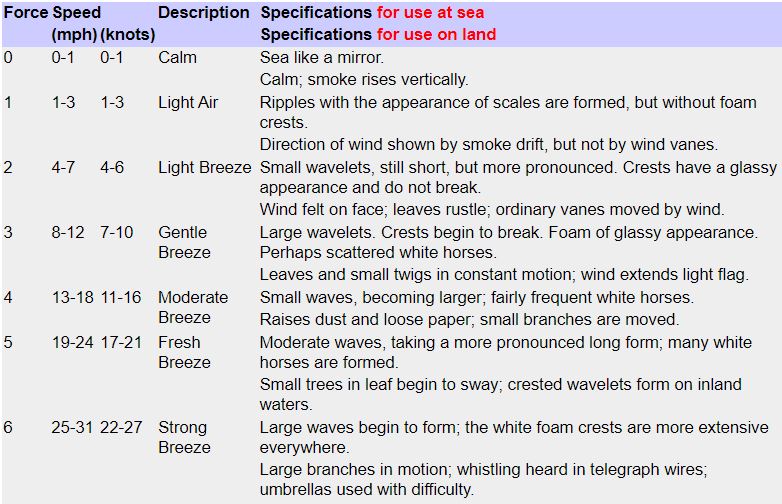
I have never questioned a boat captain’s integrity. I have been blown out in swims; I have been pulled for bad weather. I’ve had rotten kayakers. I’ve been upset and disappointed.
But, I have never once publicly complained or criticized a pilot or organization. It actually kills me to write this and to share, but Ocean Navi is pocketing A LOT of cash and is clearly not delivering on their end.
Part 3: Where do we go from here?
So what do we do next?
As of the writing of this, 0/11 swimmers and 0/1 relay have made it across this year (not counting those who haven’t started, like me and John). Clearly, this is not a swimmer problem. The way this swim is set up gives all advantage to the pilots of Ocean Navi:
-They get paid A LOT whether you swim or not. Trust me, they make more taking swimmers than they would fishing.
-They have set such strict parameters about 14 hours/no darkness that even fast swimmers will fail. Slower swimmers don’t have a chance.
-They pull you the second you cross their arbitrary lines, before you have a chance to really ride the current and find out what will happen.
-They don’t negotiate on alternative routes.
-They don’t plan a swim with currents under consideration.
Flat out, it’s wrong. No other swim completely ignores the above parameters. Sure, some swims have cut off times, but that’s rare and if they exist, you’re told about it before you sign up, rather than a few weeks before you arrive.
When you’re a swimmer in this situation, with new rules thrown at you after you’ve already signed a contract and paid, you feel trapped and taken advantage of. The cards are stacked against the swimmer, with Ocean Navi holding all the aces.
We’re all conditioned that you don’t argue with a boat pilot: the fact that I am should be an indication that the situation in Tsugaru is bad.
And then you add in the Ocean’s Seven to the puzzle. Without the O7 factor, most swimmers would probably happily walk away. But, Tsugaru is on a list! A list that says you’re a great swimmer, nonetheless!
I don’t entirely want to dive into whether or not this list should exist. In fact, I think it’s is a super cool list of swims. Most of these swims on the O7, I’d have wanted to do without them being in a list. And the truth is that humans like lists- I think every solo sport has a list of a events that if you complete them, you’re considered an elite in that sport. Think, the Triple Crown of horseracing. The Triple Crown of 200s. The Explorer’s Grand Slam. People want to climb all of Colorado’s 14ers. I could go on. Lists are cool and we want to do them. You can tell people to find their own swims, but the truth is we’re going to always be seeking a list.
However, when Steve published this list, he probably had no idea the influx of swimmers that it would draw to these swims. The English Channel, Catalina and recently the North Channel are all set up to support a lot of swimmers. There are well-established organizations with pilots aplenty, armed with knowledge. Sure, there are wait lists and nothing is perfect, but you can expect a professional experience from the above three swims. The others…. You never know. I swam Molokai with a super dangerous pilot. Swimmers simply never hear back from people with Gibraltar and the Cook Strait, though I’ve seen positive changes there in the last few years. But even in those more challenging to organize swims, once you wait your turn on the multi-year wait lists or navigate weird policies, once you are sitting on shore waiting for a swim, generally, I have always felt that the pilots are rooting for you. You may not like their policies. You may not like their personalities. But, in any prior situation, I’ve always trusted their judgement and desire to help me be successful in a swim.
Tsugaru doesn’t have that feeling and in their failures this year, they have eroded any legitimate claims to knowledge or success.
So what do I want?
First, I want to warn swimmers against this swim in its current state with Ocean Navi. If you still want to swim Tsugaru, go for it: Just know you’re taking a huge gamble and you better be bloody fast.
But, more importantly, I really want to further discussion about the Ocean’s Seven. If you’ve read this far, I want to hear from you:
-Do you think Tsugaru should be removed from the Ocean’s Seven list?
-Should it be replaced with another swim or just renamed the Ocean’s Six?
-If you replace it, what swim should take its place?
-Should the Ocean’s Seven even exist?
Marathon Swimming has no national governing body, like a FINA. WOWSA and MSF and Steven Munatones have no authority to change or control this list, but I do think they have an obligation to help make changes and to help educate swimmers on the risks of Tsugaru. They can recommend and change their record keeping policies. However, at the end of the day, change is left in the hands of swimmers. We have an opportunity to advocate for each other and join together to fix a major problem in Tsugaru. Instead of sweeping these problems under the rug, it’s time to shed light on what’s happening and come together to make it better.
Appalled at what’s happening in Tsugaru? Quit trying to swim it unless there are changes. Cancel your slot if it’s not paid for. If you decide to swim, ask the hard questions. Take control of your swim to the best of your ability.
Don’t want it to be on the Ocean’s Seven? Suggest an alternative and let’s pick a new one and start going there instead! MSF should be coming out with a survey soon- take it!
I don’t want to take anything away from people who have already completed the O7. I’m not suggesting delisting them from the O7 or suggesting people stop pursing it. But the truth is Tsugaru is broken, so unless another piloting organization comes forward, like Mr Ishii, there is no point in wasting your yen.
Nationalities of swimmers this season:
China
New Zealand
Australia
Romania
India
Japan
Australia
Russia
USA
This is not about me. This is not about me not getting a chance to swim; I’m not even mad about it. But this swim is negatively impacting swimmers from around the world. Let’s make it better, together.
I’m looking forward to the day I can go back to Japan and get a fair crack at an honest swim. But until Ocean Navi is gone, I won’t even try.
Ocean’s Seven background:
The Ocean’s Seven is a list, made up by Steven Munatones, of seven swims world-wide. It’s designed to mimic the Seven Summits, which in mountaineering is when a climber summits each of the highest peaks on every continent. They all meant to be ocean swims (not lakes or rivers) and travel across channels (not around islands or between random points in the ocean). They’re also meant to be representative of the world, so they are trying to hit as many continents/countries as possible, though admittedly the US and Europe are over-represented.
The Ocean’s Seven swims are:
- English Channel – 33 km (20.5 miles) between England and France
- Catalina Channel – 32.3 km (20 miles) between Catalina Island and the California mainland
- Strait of Gibraltar – 14.4 km (9 miles) between Spain and Morocco
- North Channel – 34.5 km (21.4 miles) between Ireland and Scotland
- Kaiwi Channel – 42 km (26 miles) between Molokai and Oahu
- Cook Strait – 22.5 km (14 miles) between the North and South Island of New Zealand
- Tsugaru Strait – 19.5 km (12.1 miles) between Honshu and Hokkaido, Japan
Click here for more info: https://longswims.com/oceans-seven/
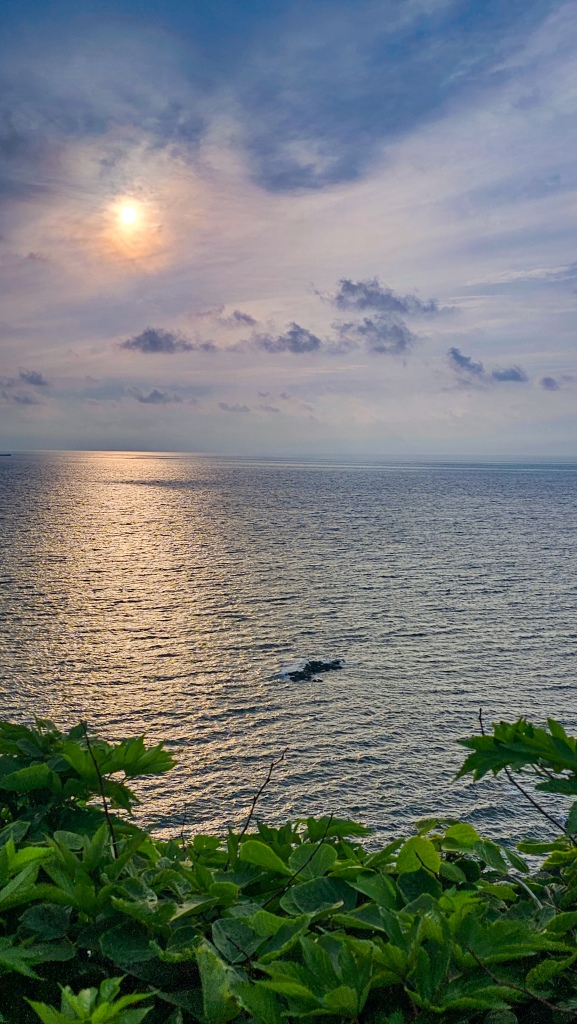


Dear Sarah,
A brilliantly written article, I have no suggestion as to what should replace it but O7 sounds better than O6.
I’ll never be an O7 swimmer I can’t even afford the channel but your article was fascinating, informative although a very difficult read due to the disappointment that you and other swimmers feel.
Thank you
LikeLike
A very well argued and written piece Sarah. Indeed something needs to change with Tsugaru or it needs replacing for the Oceans 7 swim.
LikeLike
Very interesting to read! Wish you the best!
LikeLike
Thank you for taking the time to share your experience. Your willingness to speak out is incredibly valuable and will save so many swimmers unneeded stress, time wasted and tons of money.
LikeLike
You could exchange it for a swim in South Africa. If it doesn’t have to be a channel, there is False Bay, but if it does have to be a channel, there is always the Robben Island Crossing and Big Bat Events have really good pilots.
LikeLike
What about the St Lucia Channel Molly Nance swam? 21.2 miles. , 43.1 km in 2018?
LikeLike
Agree, this swim should be pulled from the O7s & replaced. It’s all about the current, for timing, wind for go or no.
Like the idea of 7/10
Plus I’m really sorry you had such a rubbish time
LikeLike
Thank you for sharing , great insight and perspective on this swim and O7 in general. I hope this initiates a constructive conversation and instigates positive changes for swimmers.
LikeLike
The frustration you & other swimmers must be feeling.
If goalposts have changed with regards swim course/route & restrictions on only daylight swimming, then it’s almost impossible to justify it’s the same Oceans Seven. So if it’s not the same rules then I think the swim should be replaced. What with Im not sure. I’m not sure Oceans Six works as swimmers who have 1 swim left that’s not Tsugaru would need to complete 8 to get 7. It’s amazing you have highlighted this Sarah & I hope it creates enough noise to get heard.
Lose Tsugara & replace with ???? That I’m not sure. Good Luck & I’m 100% supporting you.
LikeLike
There is no one I’d trust more than Sarah to accurately analyze whether the constraints on a swim were reasonable. Thoughtful, experienced, and careful, this is coming from a place of great prior knowledge. Like most of the commenters thus far, I’d lean toward replacement, but don’t have a suggestion. I did the EC last summer… none of the other swims capture my imagination like it did, but I think that would be a way to think about looking for a replacement – what captures people’s imaginations? And now with a strong requirement of also being able to provide a logistically feasible swim on a reasonably routine basis. It’s really too bad that this is happening – it looks like an amazing place to swim. Thanks so much for sharing Sarah!
LikeLike
Very well written post. Sad for you and John. I do agree that while O7 swims are somewhat arbitrary, having a list is a great motivator. I’m probably too old (and too slow) to knock them all off, but they do get me thinking. Tsugaro is now definitely off my list.
While I’ve heard complaints about Gibraltar – mostly lack of responses to inquiries – I can attest to the fact that once you hit the ground, they let you know they are very interested in your success. I too spent three years trying to get responses before getting a date window.
I will leave it to more experienced swimmers to recommend alternate swims for the O7 if it were to be updated.
I might suggest that MSF (or some other body), standardize a post-swim questionnaire about all swims, that can be compiled, much like restaurant and other ratings are done. Collect data on pilots boats, routes, difficulty in getting slots, ground support, boat support, success and failure rates and such. Completely voluntary for swimmers, but it might start to give more leverage to swimmers. If, as a pilot, your swim is rated a 4 out of 10 versus a 9 out of 10 you presumably would lose business and you would have to change your business model and approach or go out of business. As it is now, individual stories can be compelling, but they can be ignored too easily (not you Sarah, but surely me).
Succeed or fail, I do enjoy reading about your exploits.
LikeLike
LOVE these ideas! Thanks, Eric, for sharing your thoughtful reply. My experience was the same for Cook Strait- I went in with major apprehension, but when I got there, I could feel Philip Rush’s passion for the swim and I knew he wanted me to get there. I sorta expected the same from Tsugaru once we got there. But that doesn’t exist.
LikeLike
Great writing and so informative!
So sorry for all !
But most important Wish u good luck in future and be healt!
All the best Sarah! One and only in OW!
LikeLike
What a write up! A question I have….has anyone asked any of these organizations if they even want to be included in the O7? Perhaps that is something to be considered before placing them on the list or a list? Is there the infrastructure there to handle the influx of swimmers if on the O7 list? Thank you for sharing your story….and I know others have had similar experiences….
LikeLike
Ah- I commented on this idea somewhere earlier today. If the Tsugaru people don’t want this swim, they should say so and stop accepting swimmers. As it is, they’re accepting THOUSANDS of dollars from swimmers and then putting them in the water with no chance at success. If they would just say “pass”, we could all move on….
LikeLike
I am a big fan of the round Jersey swim. Just sayin….
I think the challenge and spirit of a swim is far more important than any damn list.
LikeLike
Thank you for this informative write up. I am sorry this happened to you. I can’t imagine the frustration. I agree with Eric Durban above, on what needs to happen with the O7, in regards to collecting data and then using it to guide swimmers and regulate the events. MSF or some other ‘governing body’ needs to take hold of the O7 list and use the above collected data. If Tsugaru cannot get their act together, then maybe it should be dropped from the “list”. There is another channel swim, fairly new in the Caribbean- the St. Lucia channel, to Martinique. 21 miles. Maybe that could be the 7th swim. It is a warm water swim, which adds a challenge that is not present in the other 6. Sue Dyson is in charge there, and seems very welcoming.
LikeLike
Great post, Sarah. Like some of the others, I’ll never do O7. Probably won’t do any of the O7 swims, due to lack of ability and money. 😉
But I certainly feel that any list should have a good support system. If we wanted to replace Tsugaru, surely there’s something else in Asia. Isn’t there a big one in Hong Kong?
LikeLike
This was extremely well thought threw how you wrote this. It is incredibly sad that so many restrictions are so tight! Also the unwillingness to work with swimmers! The line they want you to swim is insane! My English Channel line was all over and at one point i was swimming so hight they thought I would not make land. But I did!! You can’t plan a swim bases of one way. I understand that night swimming might freak them out but marathon swimmers train for night swimming. I am so sad this didn’t go any were nearly what you expected. But for the money they need to work with swimmers. Otherwise it sends a message that money is there priority and not the swim.
LikeLike
Thank-You for sharing your experience Sarah…it is clear the parameters have shifted radically since the Ocean 7 challenge was established. In fairness in the light of the recent changes Tsugaru’s inclusion in the list should be revisited! To think Adam Walker would have been pulled from his swim…well it isn’t the same challenge is it? Maybe they need help from other organisations …or maybe we get over this obstacle by agreeing an alternative. I agree with the earlier comment That Big Bay Events in South Africa are fabulous to swim with in terms of organisation, safety and generally being positive towards swimmers …Robben Island was an iconic destination to start a swim but there could be others…let’s not agree to be hostages to fortune when we can create our own future in a way that honours fairness, inclusion and well-being for all of us and our crew.
LikeLike